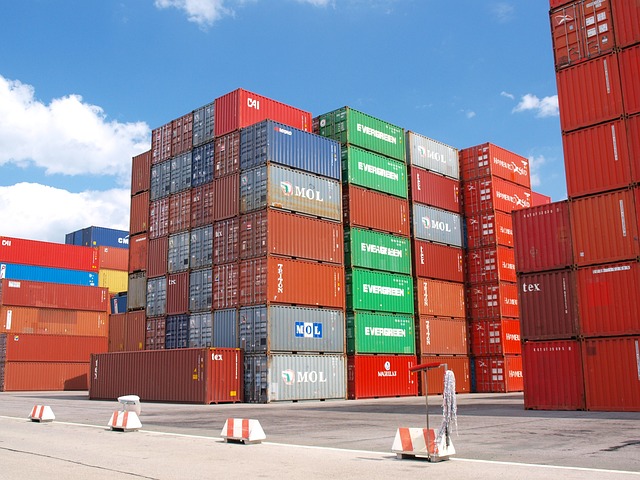“We buy, supply and export Shipping Containers to buyers in Nigeria,Africa and around the world.”
20ft & 40ft Shipping Containers Suppliers & Exporters In Nigeria & Africa
We buy, supply and export 20ft and 40ft Shipping Containers in Nigeria, Africa and worldwide.
- Home
- 20ft & 40ft Shipping Containers Suppliers & Exporters In Nigeria & Africa
Our Service To You
Whether you want to purchase 20 feet or 40 feet Shipping Containers and have it shipped to any location within Nigeria, Africa or any port around the world, our world-class team is built to help you close fast, safe, and profitable Shipping Containers purchase transactions on time, every time!
About The Services
Donec felis tellus, malesuada id velit eget, consectetur placerat lorem. Morbi et dolor pellentesque, tempus tortor sit amet, efficitur eros. Vestibulum id nunc maximus, dapibus elit quis, aliquet augue. Duis commodo egestas elit at vestibulum. Nullam enim velit, consectetur accumsan ultricies sed.
- About Shipping Containers
- Our Trade Process
What Are Shipping Containers?
Shipping containers are large standardized steel containers designed for the transportation of goods by various modes of transportation, such as ships, trains, and trucks. They are primarily used in the logistics industry to securely store and transport goods over long distances. Shipping containers are typically rectangular in shape with rigid walls, a durable floor, and doors at one end for easy access.
These containers are built to withstand the rigors of international shipping and are designed to be stacked on top of each other on ships or transported by cranes. They come in different sizes, with the most common being the 20-foot and 40-foot containers.
Shipping containers have revolutionized the global trade industry by providing a cost-effective and efficient means of transporting goods. They ensure the safety and security of goods during transit, protecting them from damage, theft, and the elements.
Beyond their primary use in transportation, shipping containers have found diverse applications, including as storage units, modular buildings, pop-up shops, and even as the basis for innovative architectural designs.
Overall, shipping containers play a crucial role in facilitating international trade, simplifying logistics, and providing a versatile solution for storage and construction needs.
Shipping containers are large standardized steel containers designed for the transportation of goods by various modes of transportation, such as ships, trains, and trucks. They are primarily used in the logistics industry to securely store and transport goods over long distances. Shipping containers are typically rectangular in shape with rigid walls, a durable floor, and doors at one end for easy access.
These containers are built to withstand the rigors of international shipping and are designed to be stacked on top of each other on ships or transported by cranes. They come in different sizes, with the most common being the 20-foot and 40-foot containers.
Shipping containers have revolutionized the global trade industry by providing a cost-effective and efficient means of transporting goods. They ensure the safety and security of goods during transit, protecting them from damage, theft, and the elements.
Beyond their primary use in transportation, shipping containers have found diverse applications, including as storage units, modular buildings, pop-up shops, and even as the basis for innovative architectural designs.
Overall, shipping containers play a crucial role in facilitating international trade, simplifying logistics, and providing a versatile solution for storage and construction needs.
Our trade process spreads across CIF, FOB, TTO, and TTT, depending on the buyer's preference.
Here's what they entail:
1). Cost Insurance and Freight (CIF): Here, the seller will handle everything from loading the vessel, paying for insurance, and sending the product to wherever the buyer wants it delivered.
2). Freight On Board (FOB): Here, the seller pays for the transportation of the goods to the port of shipment, plus loading costs, while the buyer pays the cost of marine freight transport, insurance, unloading, and transportation from the originating port to the final destination.
3). Tanker Take Over (TTO): Here, the buyer will take over the vessel, offload the product at their destination, and return it.
4). Tanker To Tanker (TTT): Here, the buyer uses their own vessel, long sides with the seller's vessel, and then the cargo is transshipped when the transaction is fully settled.
Here's what they entail:
1). Cost Insurance and Freight (CIF): Here, the seller will handle everything from loading the vessel, paying for insurance, and sending the product to wherever the buyer wants it delivered.
2). Freight On Board (FOB): Here, the seller pays for the transportation of the goods to the port of shipment, plus loading costs, while the buyer pays the cost of marine freight transport, insurance, unloading, and transportation from the originating port to the final destination.
3). Tanker Take Over (TTO): Here, the buyer will take over the vessel, offload the product at their destination, and return it.
4). Tanker To Tanker (TTT): Here, the buyer uses their own vessel, long sides with the seller's vessel, and then the cargo is transshipped when the transaction is fully settled.
We Are Ready To Handle Your Request
Enter your details and we will be in touch to discuss your project


